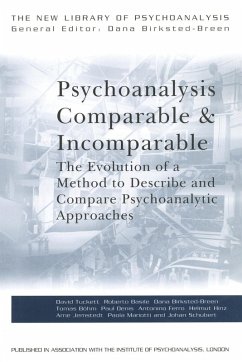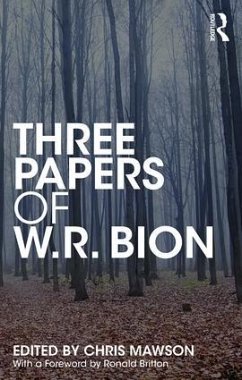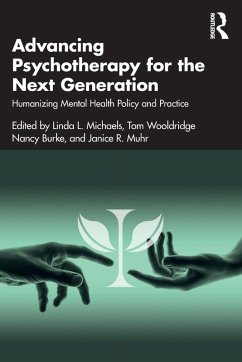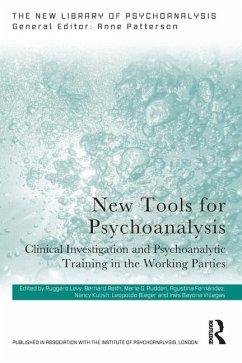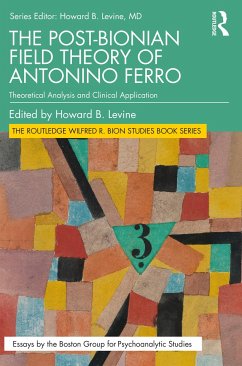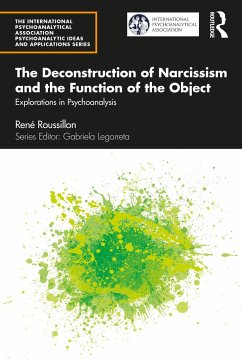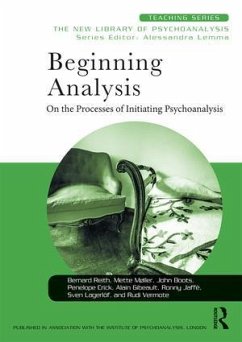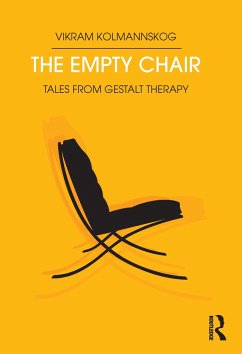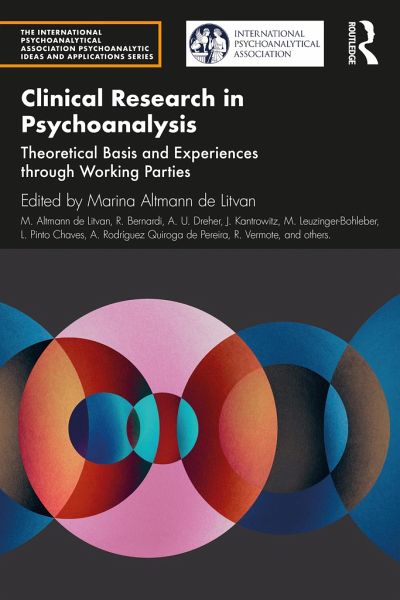
Clinical Research in Psychoanalysis
Theoretical Basis and Experiences through Working Parties
Herausgegeben: Altmann de Litvan, Marina

PAYBACK Punkte
18 °P sammeln!
This book offers different theoretical approaches about what clinical research is.Clinical Research in Psychoanalysis is a unique contribution to the attempts to bridge the gap between clinicians and researchers and to create a culture of a more rigorous and systematic inquiry. It provides an innovative experience because for the first time different methods and perspectives were used to analyse one same clinical material. This was done by analysts from different working parties of the International Psychoanalytical Association (IPA), from a range of different schools of psychoanalytic thought...
This book offers different theoretical approaches about what clinical research is.
Clinical Research in Psychoanalysis is a unique contribution to the attempts to bridge the gap between clinicians and researchers and to create a culture of a more rigorous and systematic inquiry. It provides an innovative experience because for the first time different methods and perspectives were used to analyse one same clinical material. This was done by analysts from different working parties of the International Psychoanalytical Association (IPA), from a range of different schools of psychoanalytic thought. This allows the reader to have a vision of the different methods that are currently being used by some working parties of the IPA and to learn about the strengths of each one for certain situations and types of research. This book revaluates clinical research, intending to make links between the analysts working through the working parties and the different ways of thinking in clinical research. By covering key topics, such as how working parties can facilitate different types of research; the place of metaphor in psychoanalytic research and practice; and the future for psychoanalytic research, this text is a fruitful dialogue between different theoretical conceptions and between clinicians and researchers, that will expand our perspectives on the evidence we find in clinical material and will broaden our views on the patient.
This book offers a unique and invaluable experience to psychologists and psychoanalysts who are trying to improve their clinical practice and bring research evidence into their psychoanalytic practice. It is an invaluable contribution to psychoanalytic training of candidates, teachers, and students.
Clinical Research in Psychoanalysis is a unique contribution to the attempts to bridge the gap between clinicians and researchers and to create a culture of a more rigorous and systematic inquiry. It provides an innovative experience because for the first time different methods and perspectives were used to analyse one same clinical material. This was done by analysts from different working parties of the International Psychoanalytical Association (IPA), from a range of different schools of psychoanalytic thought. This allows the reader to have a vision of the different methods that are currently being used by some working parties of the IPA and to learn about the strengths of each one for certain situations and types of research. This book revaluates clinical research, intending to make links between the analysts working through the working parties and the different ways of thinking in clinical research. By covering key topics, such as how working parties can facilitate different types of research; the place of metaphor in psychoanalytic research and practice; and the future for psychoanalytic research, this text is a fruitful dialogue between different theoretical conceptions and between clinicians and researchers, that will expand our perspectives on the evidence we find in clinical material and will broaden our views on the patient.
This book offers a unique and invaluable experience to psychologists and psychoanalysts who are trying to improve their clinical practice and bring research evidence into their psychoanalytic practice. It is an invaluable contribution to psychoanalytic training of candidates, teachers, and students.






